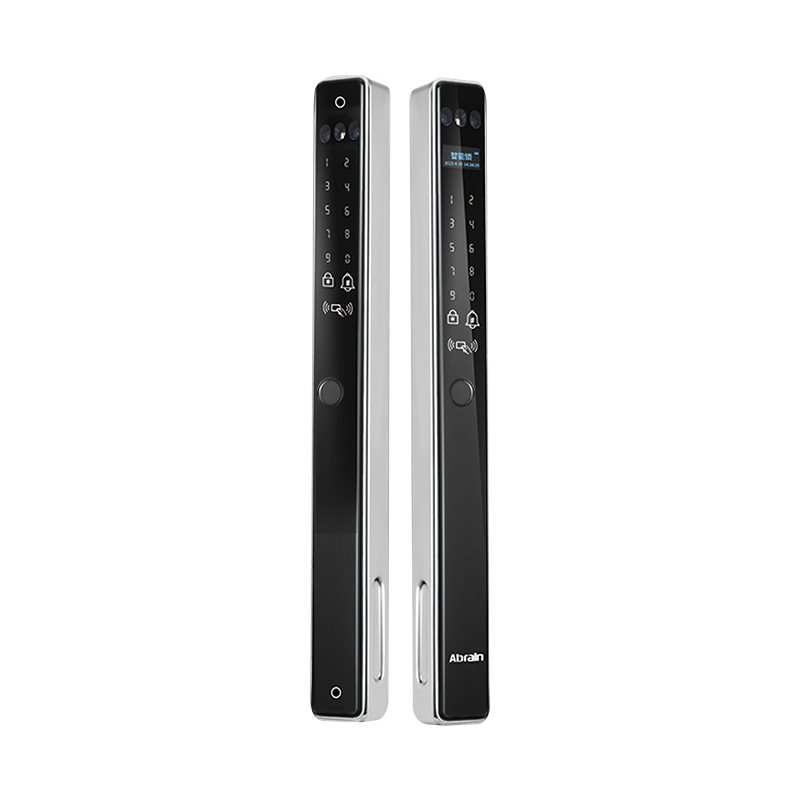Double-Sided Fingerprint Lock:Characteristics and Selection Guide
Security technology continues to evolve, offering solutions that combine convenience with durability. One of the latest innovations is the double-sided fingerprint lock, which provides biometric access on both sides of a door. Unlike traditional locks or single-sided smart locks, these models allow entry and exit through fingerprint recognition, enhancing control and flexibility.

What is a Double-Sided Fingerprint Lock?
A double-sided fingerprint lock is a smart security device equipped with biometric sensors on both the exterior and interior sides of a door. Instead of relying on keys, cards, or passcodes, users gain access by scanning their fingerprints. This design ensures that only authorized individuals can enter or exit, which is particularly useful in environments requiring high levels of access control, such as offices, laboratories, residential complexes, or restricted zones.
Characteristics of Double-Sided Fingerprint Locks
Several defining characteristics make double-sided fingerprint locks a unique and effective choice for modern security.
1. Dual-Side Biometric Verification
The primary feature is fingerprint authentication on both sides of the door. This prevents unauthorized exit as well as unauthorized entry, offering greater control over movement within a building.
2. Enhanced Security
By requiring biometric identification on both sides, these locks reduce the risks associated with lost keys, copied access cards, or shared passcodes. Each fingerprint is unique, making the system reliable for controlled access.
3. Multiple User Capacity
Many models can store a large number of fingerprints, allowing multiple users to have secure access. This feature makes them practical for households, teams, or organizations with varying access needs.
4. Combination Access Options
Although the fingerprint function is the main feature, many double-sided locks also include backup methods such as PIN codes, RFID cards, or mechanical keys. These alternatives provide flexibility in case the fingerprint reader is unavailable.
5. Durable Materials
Many double-sided fingerprint locks are made with sturdy materials such as stainless steel, zinc alloy, or reinforced aluminum. These materials ensure long-term performance and resistance to tampering.
6. Power and Battery Management
They typically operate on rechargeable or replaceable batteries. Many models feature low-battery alerts and emergency power supply options via USB, ensuring uninterrupted use.
7. Aesthetic Design
Double-sided fingerprint locks often feature sleek finishes and modern styling, allowing them to blend seamlessly into residential, office, or commercial interiors.
How to Choose a Double-Sided Fingerprint Lock
Selecting the right lock depends on the environment, the level of security required, and user preferences. Below are the key considerations.
1. Identify the Application Area
For residential use, focus on locks that combine strong security with user-friendly design. For commercial or institutional environments, consider models with higher user capacity and more advanced management options.
2. Check Fingerprint Recognition Accuracy
High-quality sensors should recognize fingerprints quickly and accurately, even under different conditions such as dry or slightly damp fingers. Fast recognition ensures convenience while maintaining security.
3. Evaluate Storage Capacity
If the lock will be used by many individuals, ensure it has adequate storage for multiple fingerprints. For example, offices may need a lock that can store dozens or even hundreds of entries.
4. Look for Backup Options
Although the fingerprint function is the primary feature, it is wise to choose a model that includes backup access methods. This ensures usability in case of technical issues or power interruptions.
5. Assess Material and Durability
Select locks made from robust materials such as stainless steel for areas exposed to frequent use. Durability not only improves longevity but also enhances overall reliability.
6. Consider Power Features
Battery life is an important factor. Some locks provide months of operation on a single charge. Models with low-battery indicators and emergency charging options help prevent lockouts.


